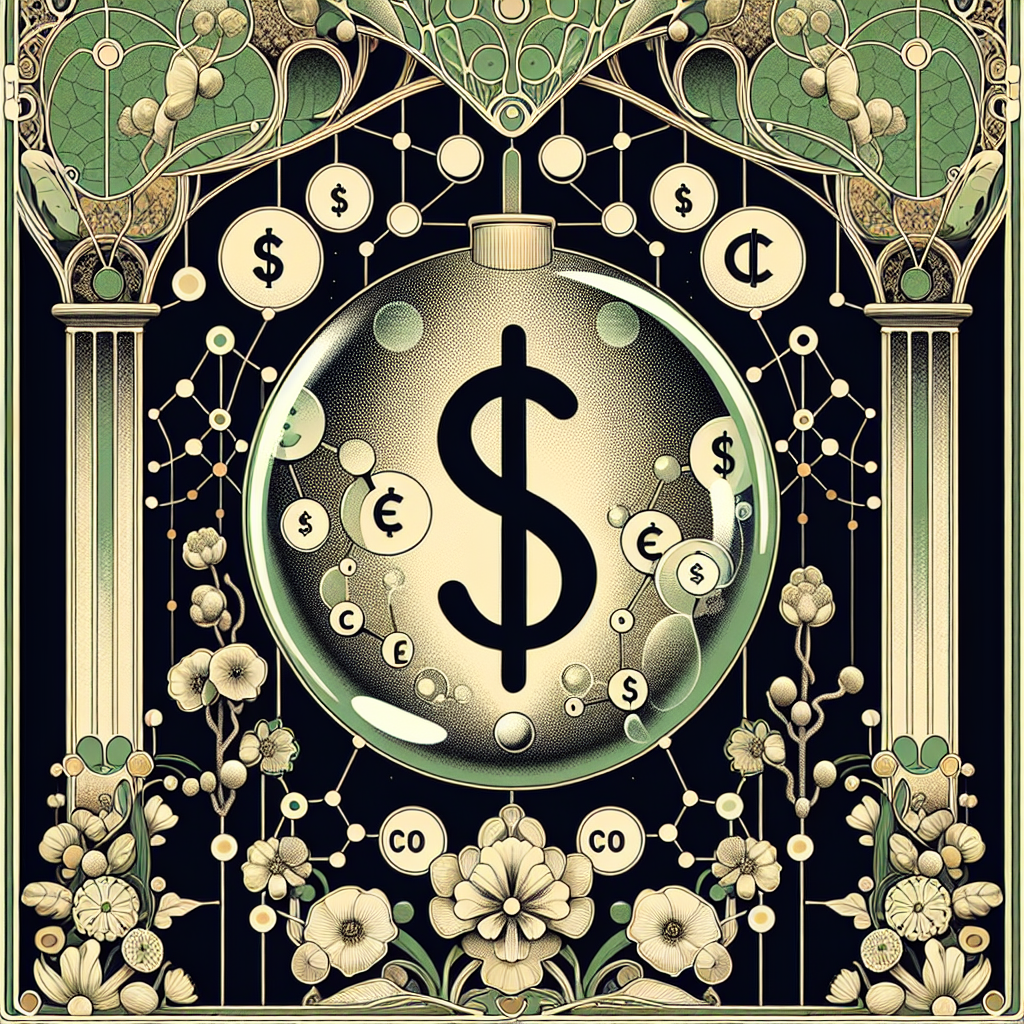Carbon Credits Tokenization: The $70 Billion Bubble Ready to Burst?

In the rush to digitize everything from your grandmother's recipe book to the deed to your house, the financial world has found its latest obsession: tokenizing carbon credits. With CarbonHood's ambitious $70 billion tokenization initiative on RedBelly Network making headlines, one has to wonder—are we witnessing innovation, or just blowing hot air into a bubble that's bound to burst?
The Carbon Credit Gold Rush
CarbonHood has partnered with RedBelly Network and Blubird to tokenize an initial 950 million tons of carbon credits, valued at approximately $70 billion USD. Their ambitions don't stop there—they aim to bring a staggering 32 billion ton asset book valued at up to $2 trillion on-chain by the end of 2025. That's not just a drop in the ocean; that's attempting to tokenize an entire sea.
Meanwhile, the global voluntary carbon credit market was valued at a mere $1.7 billion in 2024. Yes, you read that correctly—CarbonHood is planning to tokenize many times the current market size. If that doesn't set off alarm bells, perhaps your financial smoke detector needs new batteries.
Verification: The Emperor's New Certificates
The carbon credit market has long struggled with verification issues. In theory, blockchain technology provides an immutable, transparent record of carbon credit ownership, reducing fraud risks. In practice, however, linking these digital tokens to real-world carbon reductions remains problematic.
Remember the Toucan Protocol incident in 2022? Concerns about token integrity led Verra (a leading carbon offset registry) to prohibit the practice of creating tokens based on retired credits. Toucan had 'bridged' approximately 22 million Verra-issued credits onto the blockchain before this intervention.
As Oscar Wilde might have said if he were a modern financial analyst, 'To lose one carbon credit may be regarded as a misfortune; to lose millions looks like carelessness.'
Regulatory Quicksand
As of early 2025, there's no specific federal or provincial legislation directly addressing carbon credit tokenization in the United States. The European Union is developing frameworks, the United States shows interest in oversight, and Asia-Pacific countries are creating regulatory sandboxes. But a sandbox is exactly what it sounds like—a contained space where children play make-believe.
This regulatory patchwork creates uncertainty that would make even the most adventurous investor pause. We're essentially building skyscrapers on regulatory quicksand, hoping the foundation solidifies before the structure collapses.
Echoes of the ICO Bubble
If you've been in crypto long enough to remember 2017-2018, you'll recognize some familiar patterns:
- Lack of regulation creating a Wild West environment
- Excessive hype outpacing practical implementation
- Inflated valuations disconnected from underlying assets
- Promises of disruption and democratization
- A rush of similar projects chasing the same trend
During the ICO craze, companies raised billions by essentially selling promises. Today, we're tokenizing carbon credits—many of which have questionable verification standards and uncertain long-term value. As the saying goes, 'Those who cannot remember the past are condemned to repeat it.' And the crypto space has a remarkably short memory.
The Market Demand Reality Check
While projections suggest the carbon credit market could reach between $7 billion and $35 billion by 2030, tokenization enthusiasts are racing far ahead of actual demand. The total annual supply of carbon credits is expected to reach just 33 megatonnes CO2e by 2030—a fraction of what's being tokenized.
This supply-demand mismatch is further complicated by growing concerns about greenwashing. Companies are increasingly scrutinized for their environmental claims, and carbon credits with questionable verification are the corporate equivalent of a fig leaf—too small to cover the embarrassment when the truth is exposed.
Historical Lessons: Markets That Went Up in Smoke
Carbon markets have a history of boom-and-bust cycles. In 2008, the global carbon market value soared to $118 billion, only to experience a 'carbon panic' in 2012 when CDM credit prices plummeted to less than $3 per tonne of CO2. The trade in CDM credits collapsed just five years after its launch.
The market has been plagued by offset inflation, lack of quality control, and speculative trading. Even with standard setters and verification bodies acting as gatekeepers, their effectiveness remains questionable. It's like having security guards who occasionally nap on the job—not exactly reassuring.
The Bubble Diagnosis
When examining the symptoms, the tokenized carbon credit market displays classic bubble characteristics:
- Valuations disconnected from underlying asset utility
- Excessive enthusiasm and speculative investment
- Insufficient regulatory oversight
- Quality and verification concerns
- Historical precedent of market corrections
CarbonHood's $70 billion tokenization initiative on RedBelly, with plans to scale to $2 trillion, seems particularly adventurous when the entire global voluntary carbon credit market stands at just $1.7 billion. It's like claiming you'll sell beach property equivalent to the entire Florida coastline—when you only own a small sandbox.
Should You Be Concerned?
For investors, the tokenized carbon credit space requires extreme caution. While blockchain technology offers genuine benefits for transparency and traceability, the fundamental challenges of the carbon market remain unsolved. Tokenization doesn't fix verification problems—it simply digitizes them.
Regulators are playing catch-up, as usual, which means early investors bear substantial risk. When entities are rushing to tokenize $70 billion in carbon credits while the actual market is a fraction of that size, it's worth asking who will ultimately hold these tokens when the music stops.
The Path Forward
Not all is doom and gloom. For the carbon credit tokenization market to mature sustainably, we need:
- Standardized verification processes with real-world accountability
- Clear regulatory frameworks across major jurisdictions
- Realistic valuations aligned with actual environmental impact
- Transparent linking between tokens and verifiable carbon reduction
- Patient capital rather than speculative trading
Until these fundamentals are addressed, the tokenized carbon credit market remains a high-risk environment where fortune may favor the bold—but history favors the cautious.
Conclusion: Bubble or Breakthrough?
The evidence suggests we're witnessing the inflation of a tokenization bubble in the carbon credit space. When everyone rushes to tokenize the same asset class at values that dwarf the actual market size, it's time to question whether the emperor has clothes.
As with any potential bubble, some will profit handsomely in the short term. But for investors with a longer time horizon, patience may be the wisest strategy. After all, when everyone is running in one direction, sometimes the smartest move is to walk deliberately in another.
The carbon credit market needs solving—our planet depends on it. But solving complex environmental challenges requires more than tokenization wizardry. It requires verification standards with teeth, regulatory frameworks with clarity, and valuations grounded in reality.
Until then, approach the tokenized carbon credit market the way you would approach any bubble—with your eyes wide open and your risk management strategy firmly in place.




